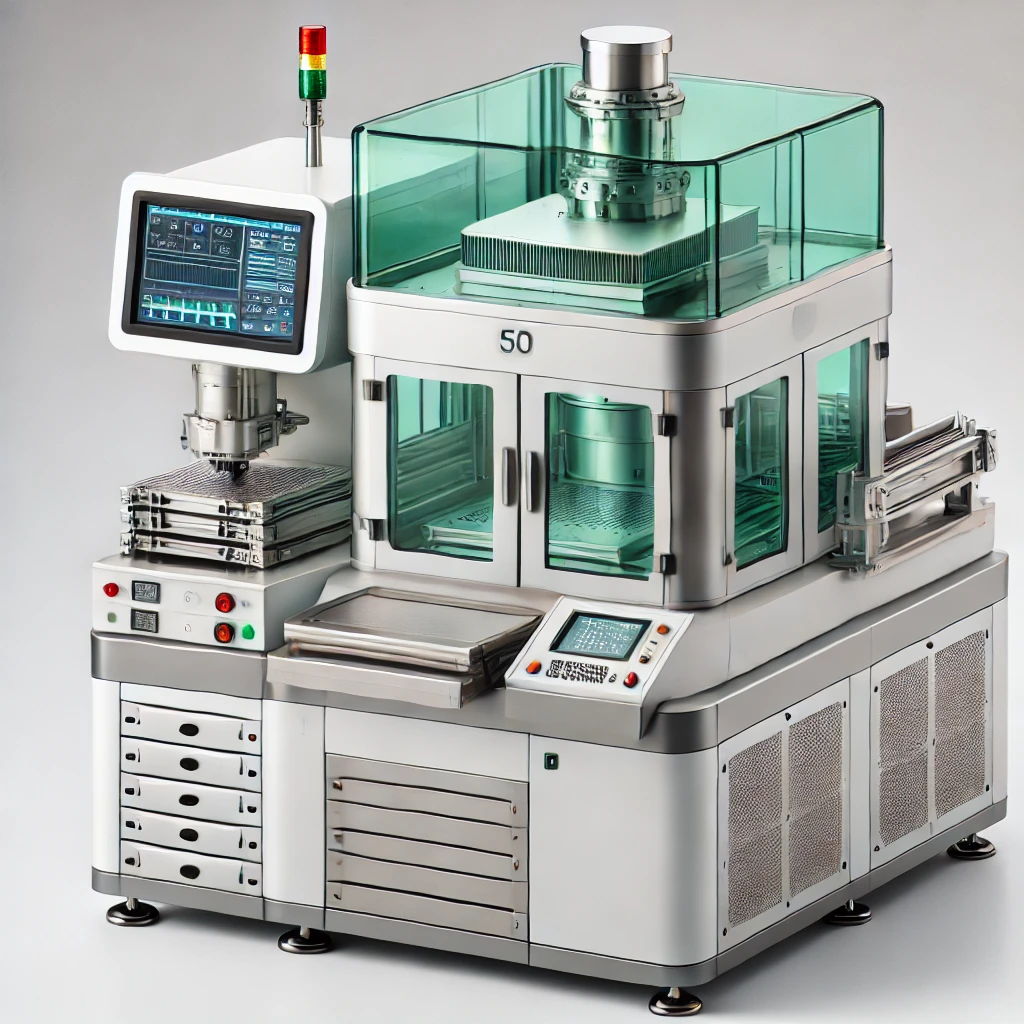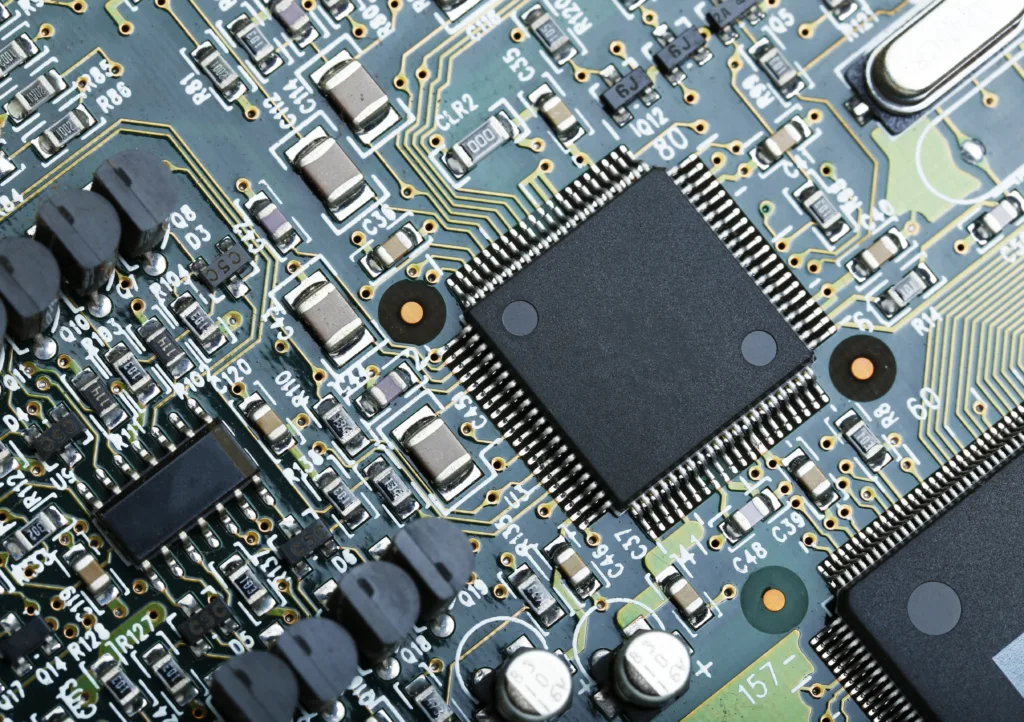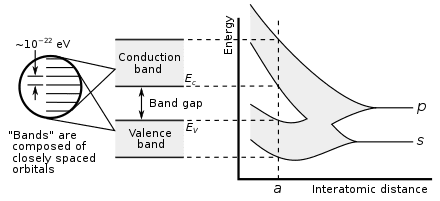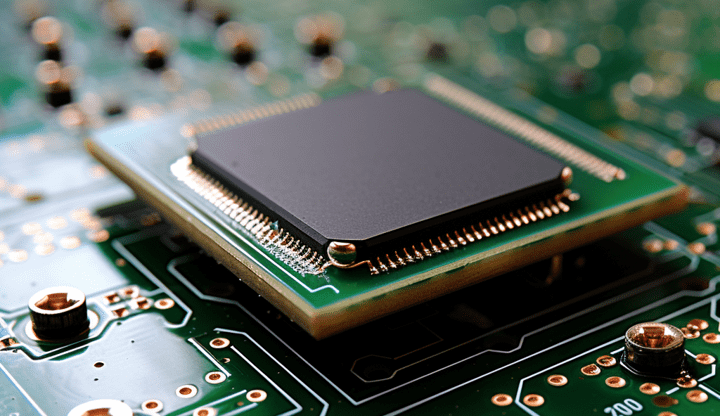
Fluxless TCB vs TCB
As interconnection pitches shrink below 10µm for advanced logic and memory applications, fluxless TCB solves the issues that standard TCB encounters with the flux.
A Voltage Controlled Oscillator (VCO) is a special electronic device found in semiconductors that produces an output signal whose frequency can be controlled by changing the voltage input. It acts like a musical instrument that can create different tones by changing the pressure of air blown into it.
Imagine you have a toy instrument that makes a sound when you blow air into it. The frequency of the sound produced depends on how much air you blow into the instrument. Similarly, a VCO in semiconductors works by changing the voltage input to control the frequency of the output signal it generates.
The VCO is made up of tiny components called transistors and resistors which are found inside semiconductors. When the voltage input changes, it affects these components and causes the VCO to produce a different frequency of output signal. This is very useful in many electronic devices, such as radios, where different frequencies are needed to tune in to different stations.
So, think of a VCO like a little device that can create different “musical” signals by changing the voltage, just like changing the amount of air blown into a toy instrument changes the sound it makes.
Mobile phones rely on various electronic components to enable wireless communication. One critical component is the Voltage-Controlled Oscillator (VCO), which plays a vital role in generating the carrier frequency used for transmitting and receiving signals. This case study focuses on the integration and optimization of a VCO in a popular mobile phone model.
Challenges:
Solution:
The mobile phone manufacturer undertook the following steps to address the challenges related to the VCO:
In conclusion, the successful integration and optimization of the Voltage-Controlled Oscillator in a mobile phone demonstrated how critical this component is for reliable wireless communication. Through careful component selection, circuit design, and testing, the mobile phone manufacturer achieved a balance between performance, power efficiency, and size constraints, resulting in an improved user experience for their customers.
The main application of VCOs is in wireless communications, where they are essential components in radio frequency (Rf) circuits. For instance, VCOs are used in cellular networks, satellite communication systems, and GPS receivers. VCOs are also widely deployed in Bluetooth, Wi fi, Zigbee, and other wireless protocols. They are also crucial in radar systems or communication satellites, where precision and reliability are extremely important.
VCOs are also used in phase locked loop (Pll) circuits and frequency synthesizers, which are fundamental components in aerospace and defense applications. Imagine a scenario where a missile is launched to intercept a moving target, such as an enemy aircraft. To ensure a successful interception, the missile needs to constantly adjust its flight path and direction to hit the target. VCOs generate precise and adjustable radio frequency (RF) signals which are then modulated with the guidance control signals.
In the medical device industry they are used in implantable devices like pacemakers and defibrillators, to keep track of the patient’s heart rate. A VCO can generate a clock signal that is used to pace the heart, and its frequency can be adjusted to fine tune the timing of the pacing signals.
In the test and measurement industry, VCOs are used to generate frequency signals that can be used to test and calibrate electronic devices. Frequency counters, spectrum analyzers and signal generators use VCOs.
They are also used in automotive applications, such as cruise control, proximity sensors, and tire pressure monitoring systems. They can be used to generate a variety of signals with different frequencies, which can be used to measure speed, distance, or other parameters.
In the 1980s, VCOs were primarily used in telecommunication systems for frequency synthesis and signal modulation. At that time, VCOs were fabricated using bipolar transistor technology, which was the dominant technology at the time. Bipolar VCOs were able to achieve high frequency operation with a wide frequency tuning range.
In the 1990s, the use of complementary metal oxide semiconductor (Cmos) technology became more prevalent due to its low power consumption, which led to the development of low power VCOs. CMOS VCOs had smaller tuning ranges compared to bipolar VCOs but offered advantages in terms of power consumption and size.
At the beginning of the 20th century the demand for wireless communication systems and portable devices increased, leading to the development of VCOs with higher performance and lower power consumption. The use of advanced semiconductor processing techniques such as silicon on insulator, strained silicon, and high k dielectrics enabled the development of VCOs with higher frequency, less phase noise, and lower power consumption.
More recently, VCOs have played an important role in the development of 5g wireless communication systems. The demand for higher data rates, increased capacity, and improved signal quality has driven the need for VCOs with improved performance. In response, semiconductor manufacturers are developing VCOs with even higher frequency capability, better phase noise performance, and lower power consumption.

As interconnection pitches shrink below 10µm for advanced logic and memory applications, fluxless TCB solves the issues that standard TCB encounters with the flux.
The metal pitch refers to the distance between the centers of two adjacent metal interconnect lines on an integrated circuit (IC). Since transistors evolved into 3D strucrures, this measurement has lost significance.

The front-end and back-end are highly interdependent. A constant feedback loop between front and back-end engineers is necessary to improve manufacturing yields.

Built directly into the silicon, through silicon vias (TSV) facilitate 3D IC integration and allow for more compact packaging. They have become the default solution to interconnect different chip layers or to stack chips vertically.

Silicon carbide (SiC) is used in electric vehicles due to its wide bandgap and great thermal conductivity. Gallium nitride (GaN) shares many characteristics with SiC while also minimizing RF noise.

GPU vs CPU is a parallelization vs complexity dilemma. While GPUs can manage very large parallel calculations, they struggle with linear, more heterogeneous tasks, where CPUs excel.